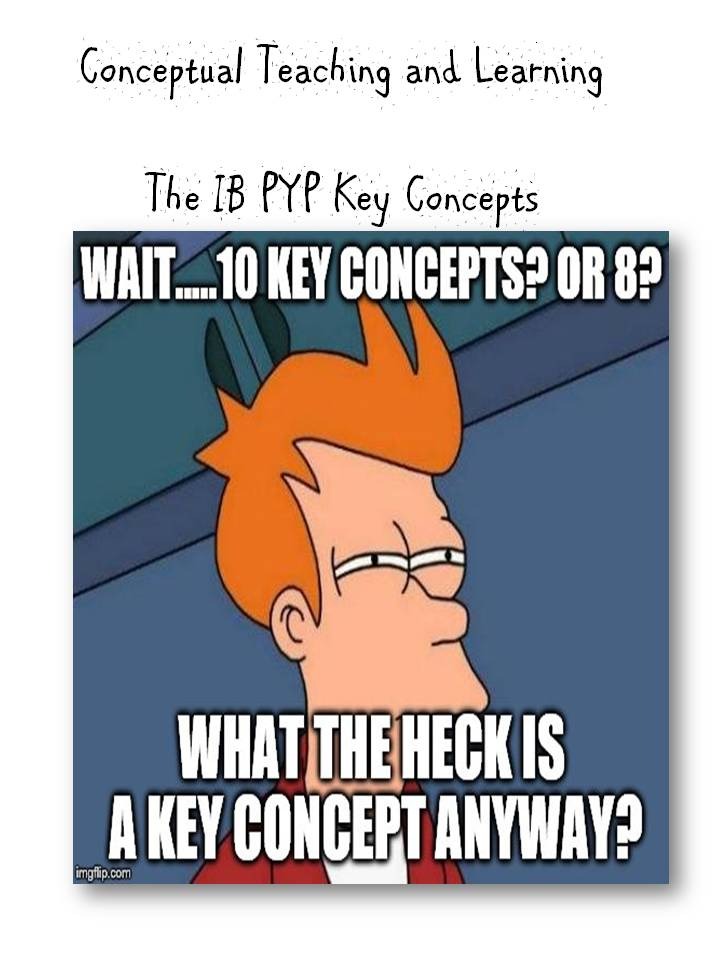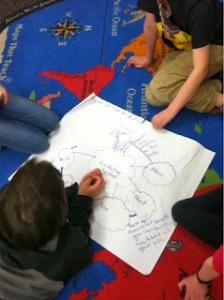Welcome to PYPteachingtools.com
5 Things You Don’t Have To Do As A PYP Teacher

When it comes to being an inquiry teacher and an IB PYP teacher, there are a bazillion articles and blog posts and podcasts and books telling us what we can do: become an effective facilitator, research new curriculum,changes to practices, to assessment etc. etc. and on and on, all while making sure we follow through with the latest buzz words -this is all well and good and no doubt valuable. But sometimes it becomes, and I'm speaking from personal experience, totally and utterly overwhelming. Well, to add a variation to the theme, I'm here today to tell you what you DONT have to do! :) Ready? Here goes. You DON'T HAVE TO.......
1. Give Feedback Daily
But how will I know if they are meeting the objectives? How will I know they understood the concepts? What if they are falling behind? These are a few of the questions that I used to ask myself back in the days when I was rushing around in a stressed out state, trying to ensure that I had enough evidence of learning and that I w...
Provoking Curiosity, Inviting Wonder: The Art of the Provocation in the IB PYP

There is partnership of thinking taking place at this stage of inquiry. It goes beyond setting the scene of the inquiry and triggering background knowledge. We are dipping into the possibilities, inviting our students to connect what they know with what they want to know and with what excites them. This requires our creativity with linking this opening learning experience to the concepts we will explore in such a way that will excite, engage, invite wonder and spark curiosity. This is where the magic begins and the student-led inquiries stem. This is the art of the provocation.
But what exactly does it mean? What is this thing we call "a provocation"? These synonyms from the definition of the noun (provocation) from the Oxford English Dictionary are indicators of what we are aiming for:
We want the provocation activity to...
Being An IB PYP Inquiry Teacher

I played around with the title of this article, largely because the job of an IB PYP teacher never looks the same from teacher to teacher. I tried, ' The Role of ....", then, " The Job of.." and finally settled on the above because basically job refers to the content and role refers to the context . Our role and job, I felt, can look quite different depending on the grade level, whereas being brings our own uniqueness to the role which amplifies the job. Make sense? I may be putting too much thought into it. Ha!
Anyway, the most common queries I receive from teachers new to student-led inquiry and the IB PYP is that they are seeking clarity as to how their job ( the content) may differ from their previous teaching positions and what their new role ( the context) , will look like.
Well, rather than simply providing a list like a job description, I created points that summarise what happens as we make that shift from the traditional classroom teacher, to that of becoming a student...
Developing Mindfulness within the IB PYP

To get straight to the point: mindfulness belongs in the classroom. As an IB PYP teacher, I approach teaching through a philosophy that centres on the child and the development of the whole child. This philosophy resonates with my own beliefs for educating our children to become avid questioners with the skills and strategies and confidence to try to find out for themselves. I nurture a sense of wonder and a strong belief in self. With this sense of self, I have to understand how to develop this awareness of self within the children and how I can guide them towards understanding who they are as unique individuals and also as learners. Mindfulness has been added to the updated IB PYP Approaches to Learning Skills. Specifically, you can now find it under the skill of Self-Management. In order to best serve the children, I first needed to understand exactly what this "mindfulness" thing was.
I'm lucky to be a part of our close-knit community of international inquiry teachers on Instag...
Student Agency, Engagement & Independent Inquiry in your IB PYP Classroom
Well, let's talk (again) about student agency and how to increase it within your classroom. Keeping in mind that it is far more than flexible seating and independently gathering resources, and more about giving the children voice, choice and action in their own learning, I'm heading straight to student engagement and developing independent inquiry. And there's a FREE sample for you too.
Student Engagement: So, What Does It Really Mean?
Student engagement is a challenge that each of us has encountered at some point within every year. It’s a lot to expect children to devote their full attention to school for eight hours straight. It is natural that they will lose focus at times, but there are strategies we can use to help them to increase this Self-Mangement skill of maintaining their focus. It’s also important to remember that engagement also involves interest, curiosity, and motivation. Are you familiar with Phillip Schlechty's five levels of engagement? His research has delinea...
6 Steps to Setting Goals with IB PYP Students


Its that time of year again……reflection, fresh starts, new beginnings and goal setting in the classroom.
A New Year or even back to school with a new school term is an exciting time to gather as a class community and to think about all the dreams and goals that everyone wants to make come true. When we begin with this type of thing, it’s a great idea to just brainstorm and make a list of ALL those aspirations. Dream boards are fun ways to do this. I make one every single year! Dream BIG! Think beyond school! Just get your students thinking forward.
Now, in order to make this list meaningful rather than a forgotten exercise within a few days, we need to encourage the children to turn those dreams into goals.
I have a free GOAL-SETTING activity to support your students as they learn to become self-aware, reflective and active goal-setters. I created these with agency and action in mind.
HEAD OVER TO THE FREE TOOLS LIBRARY TO GET THEM!
Goal setting is a practice that operates on...
Questioning Skills and the IB PYP Inquiry

If we are inquiry teachers, facilitating a student-led inquiry process, then it makes absolute sense that we have to be able to teach the children the art of questioning. Questions are, after all, the beginning of each and every inquiry. Questioning plays an important role in building a true student-led inquiry, beginning with the initial provocation. So, where do we start? Well, allow me to share my experience with you and, hopefully, bring you some practical strategies to take back to your own class of inquirers. If you missed the first part of this discussion about developing the Approaches to Learning Thinking Skills, click here to catch up with how I begin to develop those sub-skills. In this article, I have provided a free video that also offers practical suggestions. But, let’s start by doing.
Using simple thinking routines with the children, as the one below, I would work up to each of those skills: observing, identifying our schema, inferring and questioning; progressi...
Using the IB PYP Key Concepts


What is A Key Concept?
I was asked recent to show a few of our teachers how I incorporate the key concepts into everyday learning. I felt that there may be a few more of you out there who’d also be interested. So, here we go.
The IB PYP now has 7 key concepts that are designed as the lens or the “big picture”of which we look at our lines of inquiry within each of our six units of inquiry. ( 4 units for EYP)
Making Thinking Visible
It is no great news that children are created in a myriad of different ways and the way they synthesise things is as varied. We have the listeners, the visual learners, the kinesthetic and the cognitive to throw out a few of the technical terms. Our challenge is not only to cater to all of those varying forms of learning but also to be aware of who our different learners are within our classroom.
By making thinking visible, it helps us, as their educators, to see exactly what is going on ( or not going on in some cases) as each child is learning and to facilitate their learning further. Also, for a child to be able to show their thinking and explain how they came up with a solution, is a big confidence booster! :
Mindfulness in the Classroom
Mindfulness. It seems to be another of those words that is making the rounds lately. Mindfulness. To me there are so many takes on the word and I feel that it is one of those trends that we do within the IB PYP anyway. I was curious as to how the children perceived this word and so, I asked.
The responses were eye-opening really. Thankfully, many of the kids referred to the IB Attitudes, since we are constantly using this language and philosophy in school. It surrounds them.



